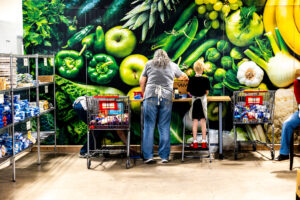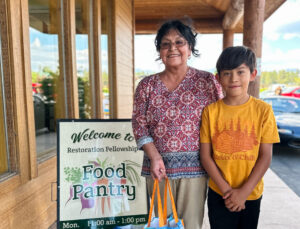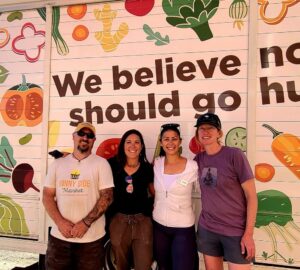Good morning friends of Care and Share!
This week, our Marketing and Communications Director and our Resource Development Director went on a story-gathering tour to meet clients in one of the farthest regions of our Southern Colorado service area.
During their travels, they met many inspiring, courageous people, saw some of the most beautiful open spaces on earth, and learned about the incredible challenges facing those living in rural communities. These are the challenges that seemed to consistently rise to the top:
- There are many seniors that live in rural communities. They have either lived in these places for decades working farms or ranches, or spent their summers in the small towns of Southern Colorado and decided to make them their permanent homes. These seniors are now struggling to remain independent with lack of transportation, neighbors that live miles away (or aging neighbors that can only provide minimal support), sparse medical care (emergency services are in many cases 30 or more miles away), and severely fixed incomes.
- Food deserts are a major problem in these communities. There are few options to buy food without traveling to the nearest town, which can be many miles away. For example, we visited Dove Creek, which is a very small town that is 35 miles away from Cortez, the nearest city. The only option to buy food in Dove Creek is at the Superette, which is also a gas station.
As in many gas stations/grocery stores in small communities, the cost of food is very expensive. This is problematic for those living on a fixed income, and makes eating healthy a big challenge.
Non-food items are even more expensive!
Many of these families do not have reliable transportation to get to Cortez to buy cheaper food, toiletries, and pet food. They have to depend on their neighbors for a ride to town. This is why local food pantries are so important for these communities.
-
Some of the families living in Dove Creek and the surrounding areas don’t have wells, so they have to haul their water from Cortez to fill their cisterns. It can cost thousands of dollars to drill wells so that households have consistent access to water.
-
The cost of living and the other challenges mentioned above oftentimes mean that grandparents, their children, and their grandchildren have to live together to make ends meet.
-
In most of the communities we visited, jobs were few and far between; however, many of the families struggling to make ends meet in these communities are very prideful and find it difficult to ask for help or receive food from pantries. Parents skip meals so their kids can eat. This is even harder when school ends and children lose access to their consistent source food.
We will be sharing more about this journey, including the incredible stories we gathered, in the coming weeks.
Stay tuned and thanks for reading!







